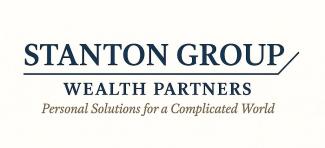
Smart Strategies for Charitable Giving
‘Tis the season for giving. Beyond exchanging presents with your loved ones, this is the time of year when many people choose to give back. Whether it’s your first or your thirtieth year donating to charity, it’s a good idea to plan your donations ahead of time. Just like anything else with your finances, the more intentional you are, the better.
Before you write a check to a charity, consider some options that could maximize your generosity.
1. Donor-Advised Funds
Donor-Advised Funds (DAF) are charitable giving programs that allow you to combine the tax benefits of giving with the flexibility to support your favorite charities. Here’s how they work:
- Donate cash or other assets to a DAF sponsoring organization
- Choose your investments
- Decide when and how your money gets to the charities of your choice
- Reap the tax benefits and maximize your donation. If invested wisely, your generous gift will build wealth and keep on giving!
The Fine Print
Like any other financial decision, you need to be armed with the details to make the best choice for your situation. If you choose to invest in a DAF, you can give anything from cash to real estate to life insurance and stocks and bonds. Once the money is out of your hands, you don’t have legal control over it. But, you are the decision-maker when it comes to how the funds are invested and when they are distributed to the charities you recommend. According to the legal setup of these accounts, the organization that holds your DAF isn’t required to follow your “advice” but there’s an understanding that they will.
The Benefits
Contributions to your DAF can provide a current year's tax deduction, then be invested to grow tax-free. This may result in more dollars for the organizations you support when you decide to transfer the assets. The funds allow you to contribute appreciated securities and non-cash assets that can help to further lower your tax bill.
If you donate cash, you typically receive an income tax deduction of up to 50% of your adjusted gross income (AGI). If you donate appreciated securities, you save on the capital gains tax and your deduction will be the full fair-market value, up to 30% of your AGI. If you are currently sitting on some big gains in stocks or mutual funds you own, this is a win-win.
Another draw is that of timing and tax strategy. Say your business has a banner year and you want to donate a sizeable gift, but some of the charities you would like to bless are small and can’t handle such a massive influx of money. A DAF lets you get the tax deduction on the full amount in the year you donate it, but you can choose to divvy out the money to the charities over a longer period of time.
2. Charitable Remainder Trusts
A charitable remainder trust (CRT) is a trust that not only provides an income stream but passes the remaining value to charities of your choice when you or your beneficiary die. Here’s a breakdown of how a CRT works:
- Transfer your appreciated asset to an irrevocable trust
- The Trustee sells the asset at full market value
- The Trustee reinvests the proceeds in incoming-producing assets
- You receive an income from the trust for the rest of your life or the time period you set
Details To Note
If you so choose, the income from the trust can be paid to your children or anyone else you like, but be aware that gift tax rules will apply if your beneficiary is anyone other than you or your spouse. You have the option of having the income last for your lifetime or the lifetime of the beneficiary, or you can set it up to last for a set number of years. You can also postpone the income payouts, allowing the trust to appreciate over time and increase its income potential. And unlike DAFs, you always have control of the trust. Your trustee manages the assets but they must follow the instructions you have indicated and make changes per your direction.
The Benefits
Just like donor-advised funds, charitable remainder trusts are an option worth investigating when creating a tax strategy and estate plan. The benefits are both short-term and long-term. You will receive an immediate charitable income tax deduction, avoid capital gains tax, and no estate taxes will be due on the amount when you die. Finally, a CRT lets you help charities that have special meaning to you.
Ready For The Next Step?
Is this the first time you’ve heard of donor-advised funds or charitable remainder trusts? If so, hopefully your head isn’t spinning! If you are interested in adding charitable giving to your financial plan, this is the ideal time to start the process so you can glean the tax benefits for the calendar year and end 2017 on a generous note. Let me help you find solutions that will result in achieving your financial goals. Call 630-445-2380 or email JStanton@seacrestwm.com to book a complimentary consultation.
About John
John Stanton is the Wealth Advisor at The Stanton Group WP | Seacrest Wealth Management, LLC. With more than three decades of experience in the financial services industry, he serves as an advisor for clients, focusing on financial planning and the investment strategies to support their financial plan. Based in Naperville, Illinois, John serves clients in Naperville, Plainfield, Darien, and throughout the state. Learn more about John’s services by visiting www.stantongwp.com or connecting with him on LinkedIn. You may reach John Stanton at l 630-445-2380 or email JStanton@seacrestwm.com.
This post should not be construed as investment advice, an offer to sell, or the solicitation of an offer to purchase an interest in any security. Advice rendered by SeaCrest Wealth Management to a client is done on an individual basis. The contents of this post may not necessarily be the opinions of SeaCrest Wealth Management. All information is believed to be from reliable sources; however, we make no representation as to its completeness or accuracy. Please consult your financial advisor for further information. Opinions expressed are subject to change without notice and are not intended as investment advice or to predict future performance.
The Stanton Group WP provides investment advisory services through SeaCrest Wealth Management LLC, (the “SWM”) a registered investment advisor. SWM is a registered investment advisor (“RIA”), with the U.S. Securities and Exchange Commission located in the State of New York. SeaCrest Wealth Management, LLC can be reached at (914) 502-1900.

